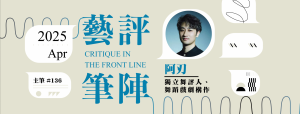French pianist Lise de la Salle made her Hong Kong debut last week with a concerto performance and a solo recital, both part of this year’s Le French May programme. Aged 27 with a booming career, Ms. de la Salle presented a solo programme, notwithstanding its brevity (around an hour with no intermission), of considerable musical weight: the Bach-Busoni Chaconne (BWV 1004), six Debussy preludes from both books, and the Variations and Fugue on a Theme by Handel, Op. 24, by Brahms.
Bach transcriptions are certainly no novelty to Ms. de la Salle, who bursted onto the scene at the age of 16 with her recording of Liszt’s and Busoni’s Bach transcriptions (Naive V5006, awarded Gramophone Recording of the Month and Editor’s Choice, August 2005). She plowed through the majestically difficult Chaconne with a carefully sculpted tone and an alert sense of rhetorical phrasing that informed her scintillating runs, rounding them off with palpable panache. A few misses, though, hinted that she was perhaps not ideally relaxed, and the performance, with several slightly congested climaxes, tended towards expressive austerity.
The Debussy preludes often evoke the image of a “hammerless piano”, but while Ms. de la Salle’s control over layers of tonal palettes was evident in the softer preludes (No. 4, 8, 1 from Book 1), her approach to the more vivid ones (No. 4 from Book 2 and No. 11, 6 from Book 1) was characterized by a remarkable boldness of expression that sounded almost Lisztian. The raging storm and disquiet rumbling in What the West Wind has seen (No. 6) comprised some of the finest moments of the night, showing how tremendous tension could be built by a combination of digital precision and an extra ounce of strength in articulation, a combination Ms. de la Salle admirably achieved.
By far the longest piece on the programme, Brahms’ Variations and Fugue on a Theme by Handel asks for physical stamina, a sense of an organized narrative and sensitive characterization of different variations. Ms. de la Salle, regrettably, was not in top form here, and took pauses between every variation (even when some variations clearly follow from the previous attacca). Her fingerwork occasionally lacked clarity, and while her strength remained in virtuosic passages, they sounded overbearing rather than, as they should, full of élan. She carried through the final fugue with a huge sonority, yet the treatment would benefit from a finer gradation of fortissimi and a more focused line of forward movement.
While Ms. de la Salle’s formidable pianism was never in doubt, the night was not an unqualified success. Her weariness might account for the fact that, after three curtain calls, she gave no encores. The thin and pallid tone of the Steinway and the constricted acoustics of the Jockey Club Auditorium must bear partial responsibility for the sonic shortcomings in the performance. Concerts organizers may take note of such inadequacies, and I look forward to hearing Ms. de la Salle again under conditions that do justice to her talent.
本網站內一切內容之版權均屬國際演藝評論家協會(香港分會)及原作者所有,未經本會及/或原作者書面同意,不得轉載。









